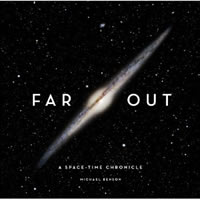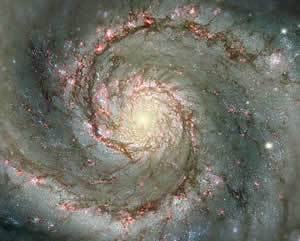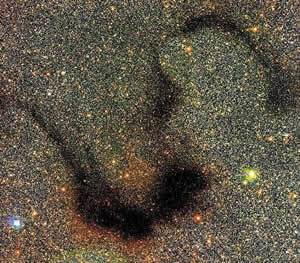Book Notes
 Michael Benson, Far Out; A Space Time Chronicle (New York: Abrams, 2009), 328pp.
Michael Benson, Far Out; A Space Time Chronicle (New York: Abrams, 2009), 328pp.
I don't ever recall enjoying a book more that I understood less. The texts and astrophotographic images of the cosmos compiled by Michael Benson make for sacred and scientific meditation on the nature and history of the cosmos. If there's one volume on which you'd like to splurge, this exquisite coffee table book makes a fine candidate. Benson has organized his book beginning with the earliest chapters considering our contemporaneous universe, like the star Antares which is 700 times the size of our sun, and concluding with the Hubble Ultra Deep Field, a small slice of space about 13 billion years old.
The mysteries and majesty pile up in page after page of superlatives. Stars that are four million times the brightness of our sun. An impending collision between our Milky Way galaxy and the Andromeda galaxy 2.5 billion years from now. But don't worry; it's possible that this mash up could occur without effect, due in part to all the Dark Matter out there. Dark Matter comprises about 96% of the universe; it's a "putative something about which we know almost nothing" (222). Still, with 100 billion galaxies out there, cosmic crashes are not that unusual. And our microscopic pin prick that we call earth? It didn't even exist until a measley 4.5 billion years ago.
It's impossible to look at these pictures and read Benson's text without considering the existential implications of our own consciousness that deciphered the cosmos. Somehow and in some way our solar system formed. "What became our world ultimately bore creatures capable of receiving and interpreting that [13 billion year old] light" that twinkled back to us on earth. Scientific explanations for the process by which those atoms came together are as mysterious, finally, as faith-based ones" (317). Benson's prose then stumbles and bumbles for affirmation with accuracy: "Through a profoundly mysterious alchemy, via the agency of an as yet ineffable mechanism, a certain further something then transpired." That "further something" was the appearance of carbon-based life and eventually humanity itself which, like all the cosmos, originated from materials that "once wafted in clouds between the stars" (317). Stay tuned, the James Webb Space Telescope, successor to the Hubble, is due for launch in 2014.
 |
 |
The Whirlpool Galaxy. |
The Snake Nebula. |
Image credits: Whirlpool Galaxy; Snake Nebula.


